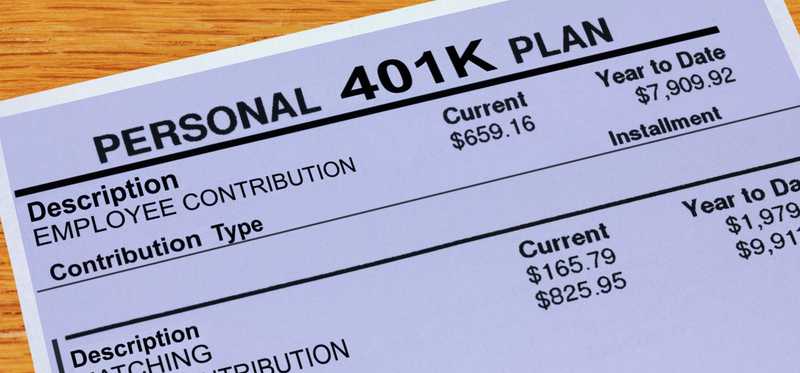15 Ways to Figure Out How Much to Invest Per Month

15 Ways to Figure Out How Much to Invest Per Month
Deciding how much to invest can shape your financial future
Investing can help you put your money to work so you can build wealth.
It's much harder to accomplish financial goals if you don't invest and earn reasonable returns. But all investing has inherent risks. As a result, you need to make informed choices when deciding how much to invest.
How can you do that? Here are 15 different solutions for deciding how much of your money to use each month to buy assets designed to help you grow your net worth.
5 Stocks Under $49
Presented by Motley Fool Stock Advisor
We hear it over and over from investors, "I wish I had bought Amazon or Netflix when they were first recommended by The Motley Fool. I’d be sitting on a gold mine!" It's true, but we think these 5 other stocks are screaming buys. And you can buy them now for less than $49 a share! Click here to learn how you can grab a copy of "5 Growth Stocks Under $49" for FREE for a limited time only.
Previous
Next

1. Use simple shortcuts to estimate your needs
One of the easiest ways to set investing goals is to simply follow some traditional rules of thumb.
For example, the 50-30-20 budget says you should save 20% of your income while capping your needs at 50% and your discretionary expenses at 30%. If you follow this, you'll know exactly how much to invest in savings and brokerage accounts each month -- about 20% of what you bring home.
You can also follow some basic rules for estimating how much to save for a particular goal. If you're unsure how much to invest for retirement, for example, you could heed the advice from experts who say you'll need 10 times your final salary before leaving the workforce.
Previous
Next

2. Establish financial objectives and determine how to achieve them
Generalized rules are a simple way to decide how much to invest, but they may not work in every situation to help you accomplish your own unique objectives. If you want to retire at 50, for example, you may need to save much more than the typical person would.
The best way to make sure you're personally saving enough to do the things you want is to figure out exactly how much money you'll need -- and how much to invest to amass that amount on your desired timeline.
If you want a $1 million nest egg by age 50, for example, you can work backward from there to make sure you're investing enough to hit your target.
Previous
Next

3. Set long-term goals first and break down big ones into small ones
In many cases, it can be overwhelming to have a big investment goal that you hope to accomplish years in the future. If you want $1 million saved in 30 years, for example, it's difficult to know where to start.
That's why it can be so helpful to break big goals into small ones.
Once you know what you ultimately hope to achieve with your investment accounts, take the time to figure out how much to put into those accounts each year, month, or even each week so you can stay on track.
ALSO READ: 3 Retirement Planning Steps No Married Couple Should Skip
Previous
Next

4. Use the SMART method of goal setting
Setting investing goals is only effective you follow them. The SMART method of goal setting helps to ensure that you'll stick with your plan.
SMART stands for:
- Specific
- Measurable
- Attainable
- Relevant
- Timely
In other words, for any investing goal you set for yourself, you will want a specific target number so you can measure your progress. You'll need to make sure the goal is realistic, that you're excited about it, and that you have a deadline for achieving it.
Previous
Next

5. Take a careful look at your budget and prioritize investing
While setting investing goals based on the amount you hope to end up with is the best way to accomplish your goals, it won't work for everyone. The simple fact is that sometimes you may not be able to invest as much as you'd prefer because you have a cash shortfall.
If you're struggling to come up with money to invest, you may want to take a different approach: focusing on what you can afford.
By taking a close look at your budget, looking for spending cuts you can make, and aiming to invest as much as possible, you can at least ensure you're making some progress in your efforts. It may not be ideal to invest less than your preferred amount -- but investing some money is better than nothing.
5 Stocks Under $49
Presented by Motley Fool Stock Advisor
We hear it over and over from investors, "I wish I had bought Amazon or Netflix when they were first recommended by The Motley Fool. I’d be sitting on a gold mine!" It's true, but we think these 5 other stocks are screaming buys. And you can buy them now for less than $49 a share! Click here to learn how you can grab a copy of "5 Growth Stocks Under $49" for FREE for a limited time only.
Previous
Next

6. Use an online investing calculator
There are plenty of online investing calculators out there that can simplify the goal-setting process -- and it's worth making use of them if you aren't sure how much you'll need to invest each month to amass the desired amount of money.
Investor.gov is one great source of these calculators. By using the calculators on that site, you can see how much your investment can turn into over time and also find out how much you'd need to invest each month to hit a savings target.
ALSO READ: This Generation Is the Most Optimistic About Their Retirement
Previous
Next

7. Talk with a financial advisor
If you're overwhelmed when it comes to setting investment goals, it may be worth getting professional advice. A financial advisor can help you identify your goals and ensure that you have a solid plan in place for investing enough to achieve them.
Just be sure you know how your advisor will be paid, and don't pick an advisor who will be incentivized to steer you toward costly investments that pay a higher commission.
Previous
Next

8. Understand the rules for your employer match
One of the best and simplest investing goals is to invest enough in a 401(k) to earn your full employer matching contribution.
Many employers that offer a workplace 401(k) will match the contributions you make to it. This is free money, and depending on your matching rules, it could provide up to a 100% return on investment -- guaranteed.
You never want to pass up the chance for free cash, so if you do nothing else to prepare for your future, find out how much to invest to get your employer match and contribute that required amount to your 401(k).
ALSO READ: 3 Retirement Accounts That Can Help You Go Beyond a 401(k)
Previous
Next

9. Aim to max out tax breaks for investing
Certain accounts such as 401(k) and IRA plans come with tax breaks for investing. Since you can make deductible contributions, the government helps to subsidize your investing.
Aiming to get as close as possible to maxing out these tax-advantaged accounts can be a simple way to set investing goals since it's worth trying to get as much help from Uncle Sam as you can to prepare for your future.
Previous
Next

10. Coordinate with a spouse
If you're married, you should discuss your shared goals with your partner. You can work together to decide how much you each need to invest in order to accomplish important things that you want to do together, such as paying for college for your children or retiring by a certain age.
5 Stocks Under $49
Presented by Motley Fool Stock Advisor
We hear it over and over from investors, "I wish I had bought Amazon or Netflix when they were first recommended by The Motley Fool. I’d be sitting on a gold mine!" It's true, but we think these 5 other stocks are screaming buys. And you can buy them now for less than $49 a share! Click here to learn how you can grab a copy of "5 Growth Stocks Under $49" for FREE for a limited time only.
Previous
Next

11. Start with whatever you can spare
Setting investing goals may seem like a fantasy if you don't have much money after covering the bills. If that's the case, then you could simply set the objective to invest as much as you can.
If you take this approach, try to find room in your budget each month to contribute a small amount regularly to your investment accounts -- even if it's just a few dollars.
Then commit to investing as many windfalls as you can, such as a tax return or a bonus from work. This will enable you to can build up your portfolio as much as possible even with little cash to spare.
Previous
Next

12. Consider projected returns
It's important to think about how much you expect to earn by investing when you decide how much to put into your brokerage account each month.
If you are a conservative investor, you'll need to be more aggressive in how much you contribute to your accounts since you're limiting the returns you can earn.
If you're willing to take on more risk, you may be able to get away with investing less -- if your risks are calculated and they pay off for you.
Previous
Next

13. Consider your investing timeline
Your timeline for when you'll need to begin to rely on your investments also affects the goals you should set for yourself.
If you anticipate needing the money soon, you may need to make much larger contributions to your investment accounts than you would if you had decades to amass the nest egg you need.
ALSO READ: 3 Ways to Grow $100,000 Into $1 Million for Retirement Savings
Previous
Next

14. Assess your risk tolerance
The level of risk that you should take when investing affects the amount you must contribute to your accounts each month.
This will change over time because you'll have less time to wait out market downturns when you must begin withdrawing from your investment accounts soon.
If you're a senior who will be retiring imminently, for example, you may want to shift your focus from bulking up your stock investments to putting more of your money into liquid assets such as a high-yield savings account.
Previous
Next

15. Look at the big picture of your finances
Finally, when setting investment goals, you need to consider all the other things you hope to do with your money as well.
If you don't yet have an emergency fund or if you have high-interest debt, you may want to focus on devoting some of your cash to taking care of these financial goals rather than investing as much as possible.
5 Stocks Under $49
Presented by Motley Fool Stock Advisor
We hear it over and over from investors, "I wish I had bought Amazon or Netflix when they were first recommended by The Motley Fool. I’d be sitting on a gold mine!" It's true, but we think these 5 other stocks are screaming buys. And you can buy them now for less than $49 a share! Click here to learn how you can grab a copy of "5 Growth Stocks Under $49" for FREE for a limited time only.
Previous
Next

Making smart choices about investing can pay off in the end
Investing plenty of money throughout your life can go a very long way to help you build wealth. The more you can invest -- and the earlier you can get started -- the more financial security you'll end up with.
It's well worth taking the time to set smart goals and make sure you're investing enough. So find a strategy that works for you, and get started ASAP.
The Motley Fool has a disclosure policy.
Previous
Next
Invest Smarter with The Motley Fool
Join Over Half a Million Premium Members Receiving…
- New Stock Picks Each Month
- Detailed Analysis of Companies
- Model Portfolios
- Live Streaming During Market Hours
- And Much More
READ MORE
HOW THE MOTLEY FOOL CAN HELP YOU
-
Premium Investing Guidance
Market beating stocks from our award-winning service
-
The Daily Upside Newsletter
Investment news and high-quality insights delivered straight to your inbox
-
Get Started Investing
You can do it. Successful investing in just a few steps
-
Win at Retirement
Secrets and strategies for the post-work life you want.
-
Find a Broker
Find the right brokerage account for you.
-
Listen to our Podcasts
Hear our experts take on stocks, the market, and how to invest.
Premium Investing Services
Invest better with The Motley Fool. Get stock recommendations, portfolio guidance, and more from The Motley Fool's premium services.